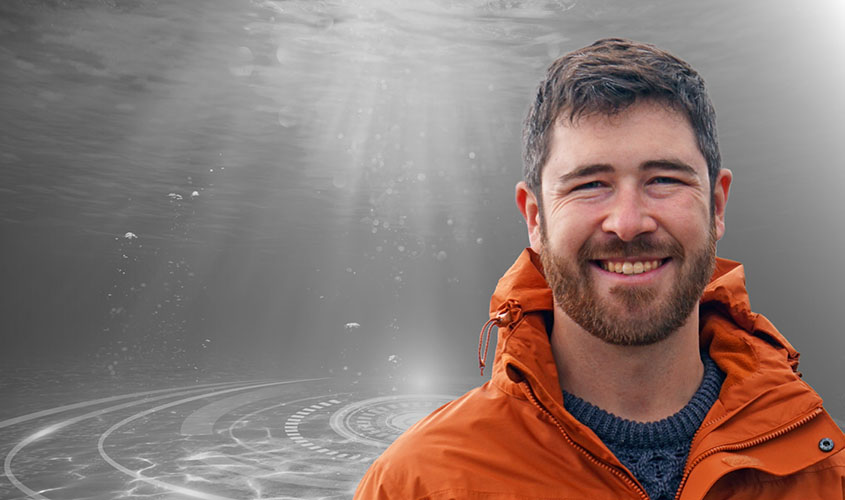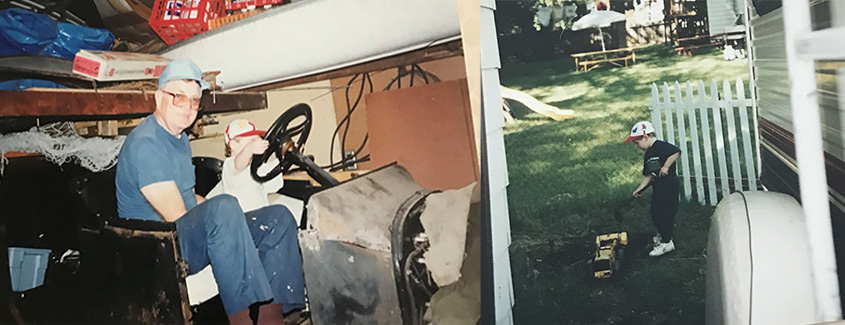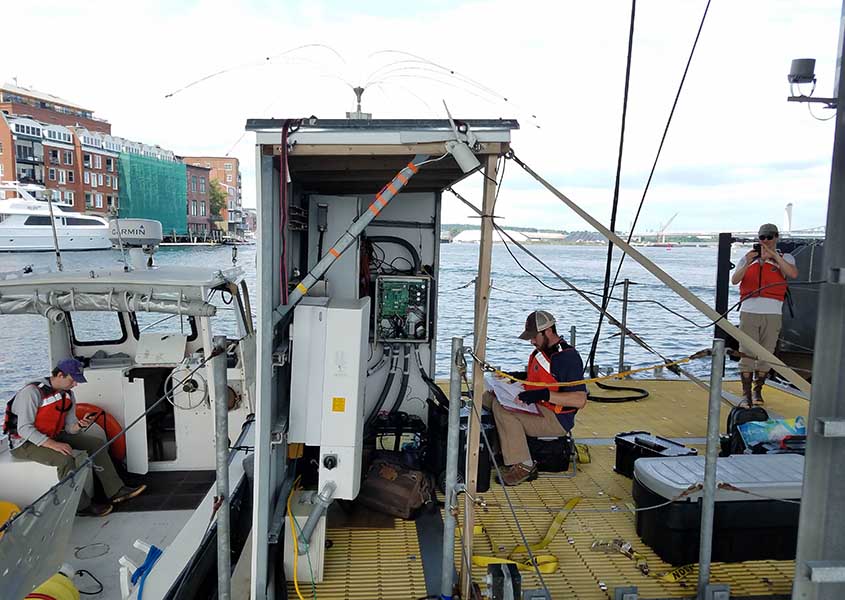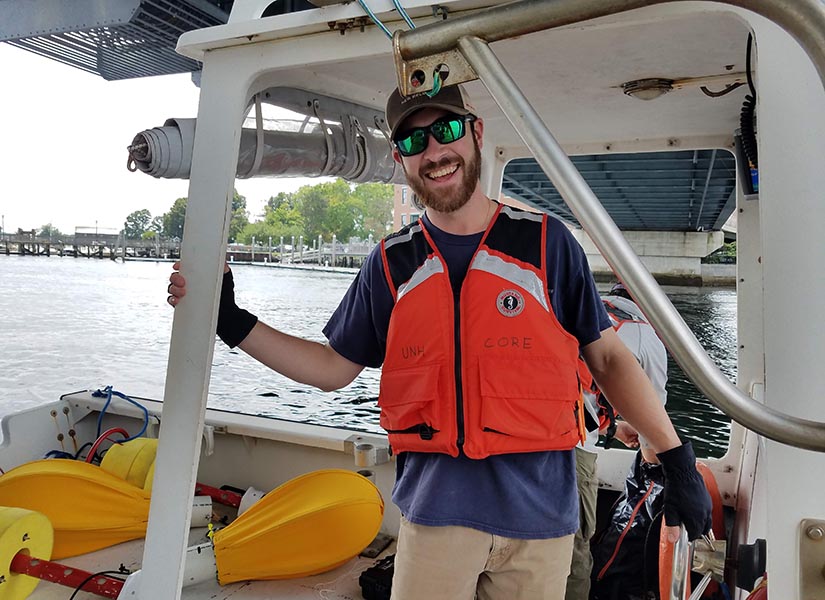Beneath the Surface: From Holes to Coal to Tides: Patrick O'Byrne's Journey to Clean Energy

Patrick O’Byrne was a serious child. Always busy. Always working on something, his parents would say. “Working on what?” you might ask.
“Digging holes. Self-directed projects,” O’Byrne said, without even a hint of a smile.
O’Byrne, a water power intern at the National Renewable Energy Laboratory (NREL), learned his industrious habits from a family of "worker bees." His grandfather, for example, fixed everything from the family television to the Ford Model T he owned his entire life. When O’Byrne recalls summer vacations on Massachusetts’ beachy Cape Cod, he does not mention sandcastles or boogie boards; he talks about discovering the ocean’s “wild natural systems,” as he calls them.
It is almost as if O’Byrne was born with his shirt sleeves rolled up, ready to work.
Now, fresh out of graduate school, O’Byrne is exactly what his parents expected him to be: an engineer, specializing in those wild ocean systems. With a master’s degree in ocean engineering from the University of New Hampshire, O’Byrne is helping hone tidal energy technologies, which, like submerged wind turbines, spin in rushing currents to generate clean, renewable electricity.
The field fits. O’Byrne not only gets to work on intricate underwater engineering challenges; he is also helping to solve one of the most serious and complex problems facing the world today: climate change.
“You grow up around people you care about, people you learn values from,” O’Byrne said. “And becoming very aware of our climate needs and how grave a danger society is in, I couldn’t sit back and do nothing.”

And yet, O’Byrne did not race straight from college to ocean energy. In between, he spent five years repairing generators that transformed almost every kind of energy source—including coal, natural gas, nuclear, and hydropower—into electricity for the U.S. power grid. O’Byrne relished the hands-on work; he traveled from state to state, working on major power outages alongside what he called a “collective beehive” of hundreds of contractors working together to repair and upgrade power plants.
“I saw this incredible perspective of what humans can accomplish in a short period
of time,” O’Byrne said.
But he saw something else, too.
“I’ve worked at about 10 coal-fired power plants, which is an amazing thing to see—the amount of coal that’s burned every year. But it really puts the scale of human industry and impact into perspective,” O’Byrne said. “I’m really an environmentalist at heart. I grew up fly fishing and loving nature, and I wanted my work to help preserve natural ecosystems in some way.”
To make that happen, O’Byrne returned to school. And it was there, as a graduate student at the University of New Hampshire, that he discovered tidal energy—through a bridge.
In 2014, the Memorial Bridge—which crosses a tidal estuary to connect Portsmouth, New Hampshire, to Kittery, Maine—failed to pass inspection. Engineers refurbished the bridge, making it not only stronger but also “smart,” installing sensors that monitor traffic patterns, environmental conditions, and the structure’s health.
To power all those sensors with renewable energy from the Piscataqua River flowing underneath, engineers from the University of New Hampshire mounted a tidal energy turbine beneath the bridge. And when O’Byrne joined this effort, which became known as the Living Bridge project, he helped repair some of the electrical connections—a throwback to his former job—to link the turbine to the local grid.

The project’s tidal turbine also offered a rare opportunity to study how this budding technology performed in the real world. But collecting data on a device submerged in a salty tidal estuary (like the Piscataqua) requires specialized instrumentation. For that, O’Byrne and the University of New Hampshire crew needed a little extra help from NREL’s experts.
Out in Golden, Colorado, NREL researchers Aidan Bharath and Casey Nichols worked with their Florida-based team member Rob Raye to design a custom data acquisition system to monitor the egg-beater-shaped turbine’s energy production. Meanwhile, colleagues at Pacific Northwest National Laboratory tested how much underwater noise the turbine generated to learn how the device might impact the fish, harbor seals, whales, kelp, and mussels that live in the Piscataqua River.
So far, those sensors have detected no significant environmental impacts. And all that rich data can help the tidal energy community, including the Living Bridge team, move their technologies closer to commercial use. More data builds more accurate numerical models, which developers can use to refine their devices.
“To make these devices more cost competitive with fossil fuels or other renewable sources, we need to bring down their cost,” O’Byrne said. To do that, researchers need more data but also more test sites. Because the Living Bridge sees gentler currents than, for example, Alaska’s energetic Cook Inlet, it could be a cost-effective spot to test fledgling technologies.

After O’Byrne completed his master’s degree, neither the NREL nor Living Bridge teams wanted to lose him—so, they hired him. As part of yet another project funded by the U.S. Department of Energy’s Water Power Technologies Office, O’Byrne is continuing to analyze the data he and the NREL team collected, aiming to publish their data set in the Marine and Hydrokinetic Data Repository in spring 2023.
But for his next career step, O’Byrne is eyeing another ocean renewable. In Massachusetts, where O’Byrne currently lives, offshore wind energy is booming. And he is keen to stay close to his wild ocean.
But that does not mean he is not optimistic about tidal energy’s future, too.
“Tidal is at the intersection between dependable traditional generation and the variability of renewable energy sources,” he said. “You know exactly when and how much power you’re going to get hundreds of years into the future. So, it’s exciting; it just works. It spins up, and it’s there.”
Learn more about how NREL’s experts are helping advance marine energy. And subscribe to the NREL water power newsletter, The Current, for the latest news on NREL's water power research.
Last Updated May 28, 2025
